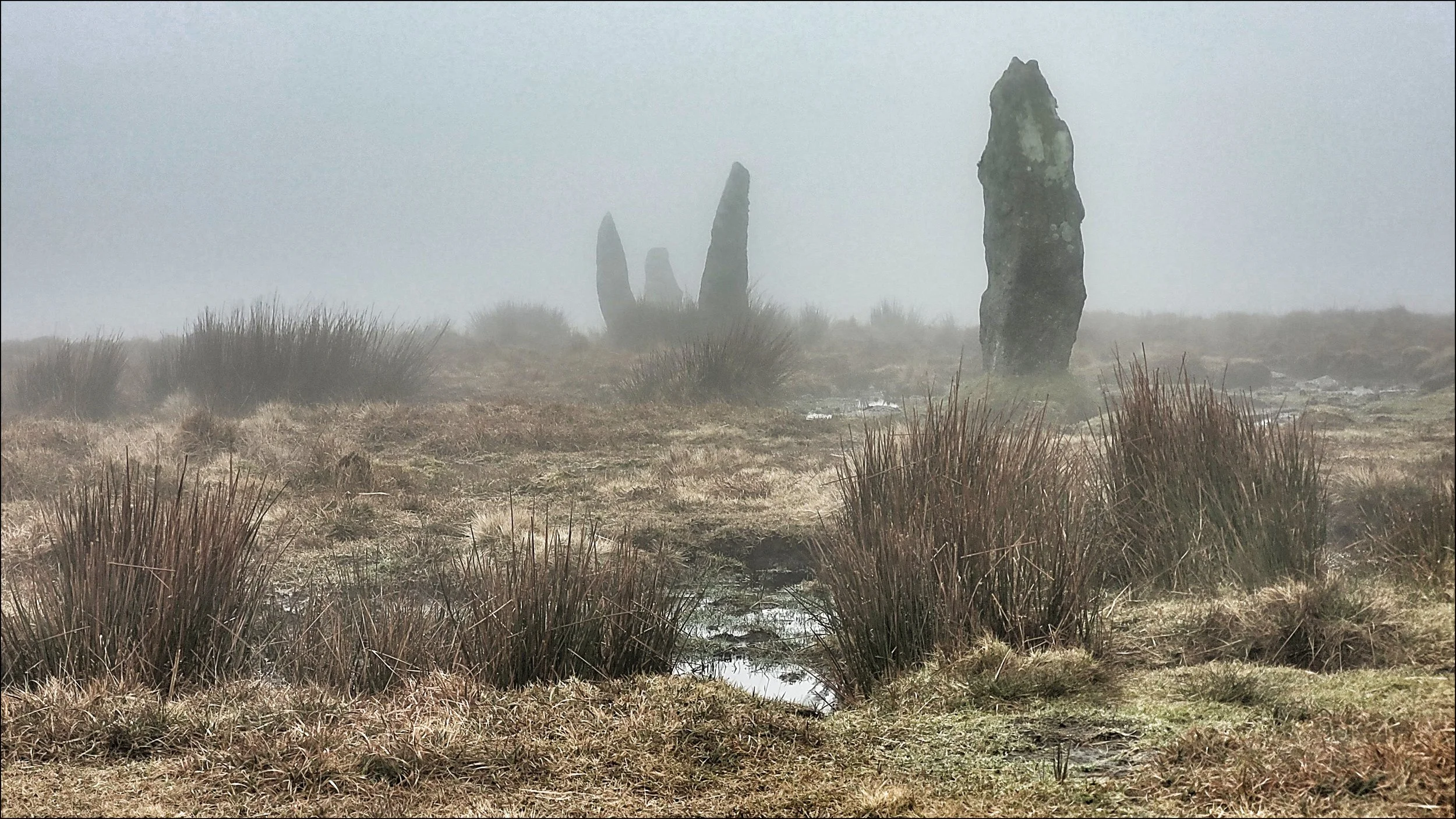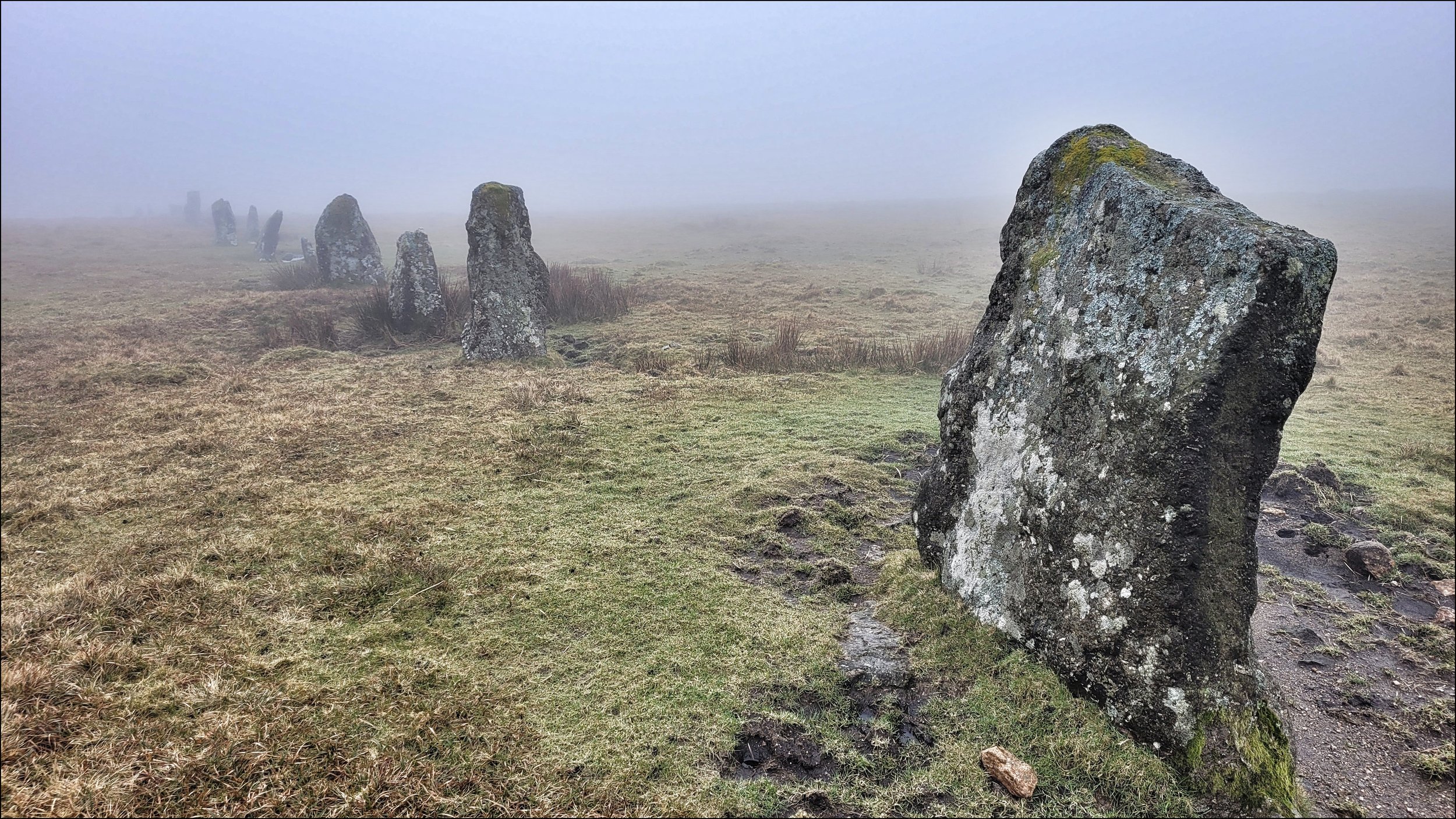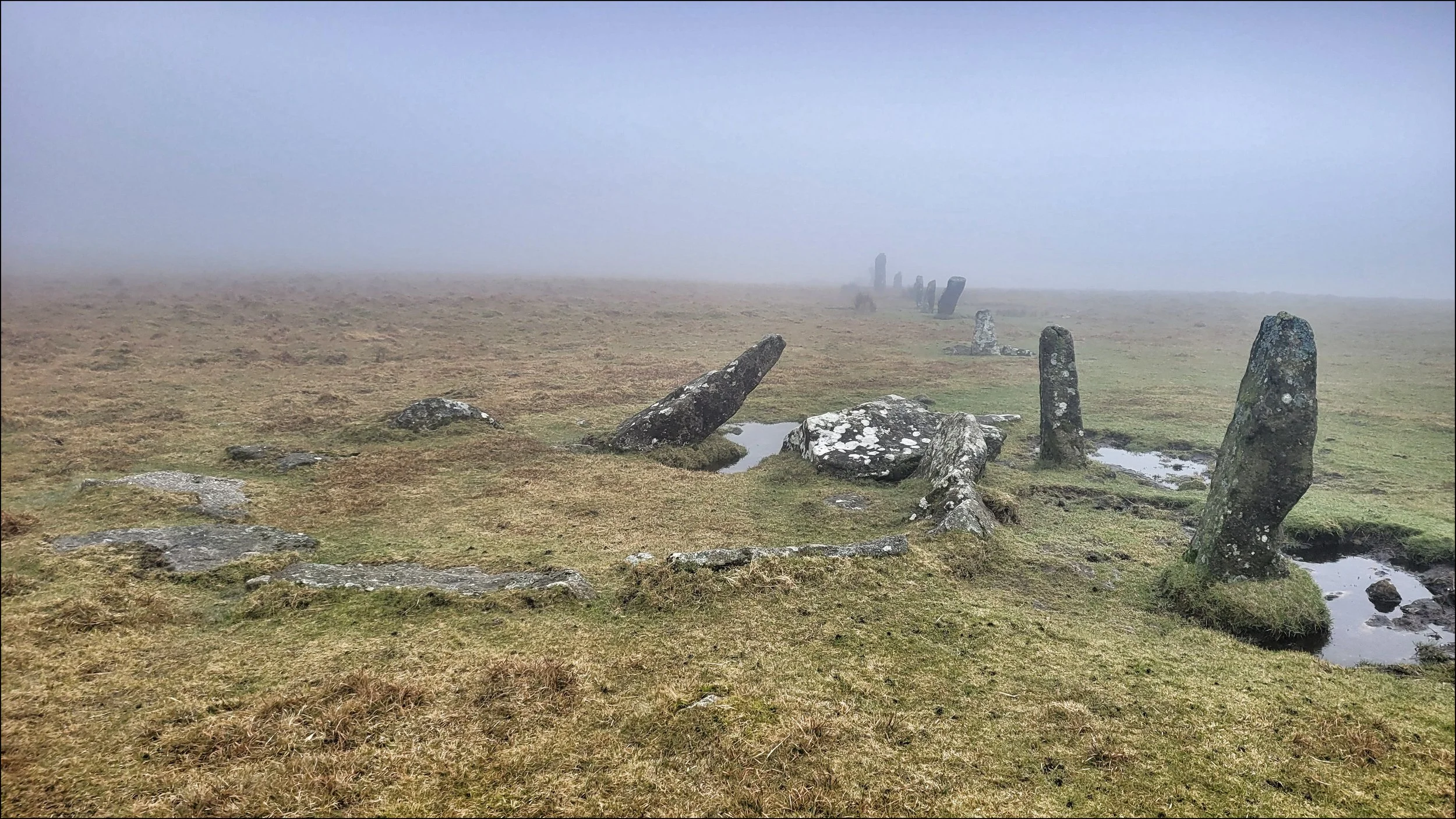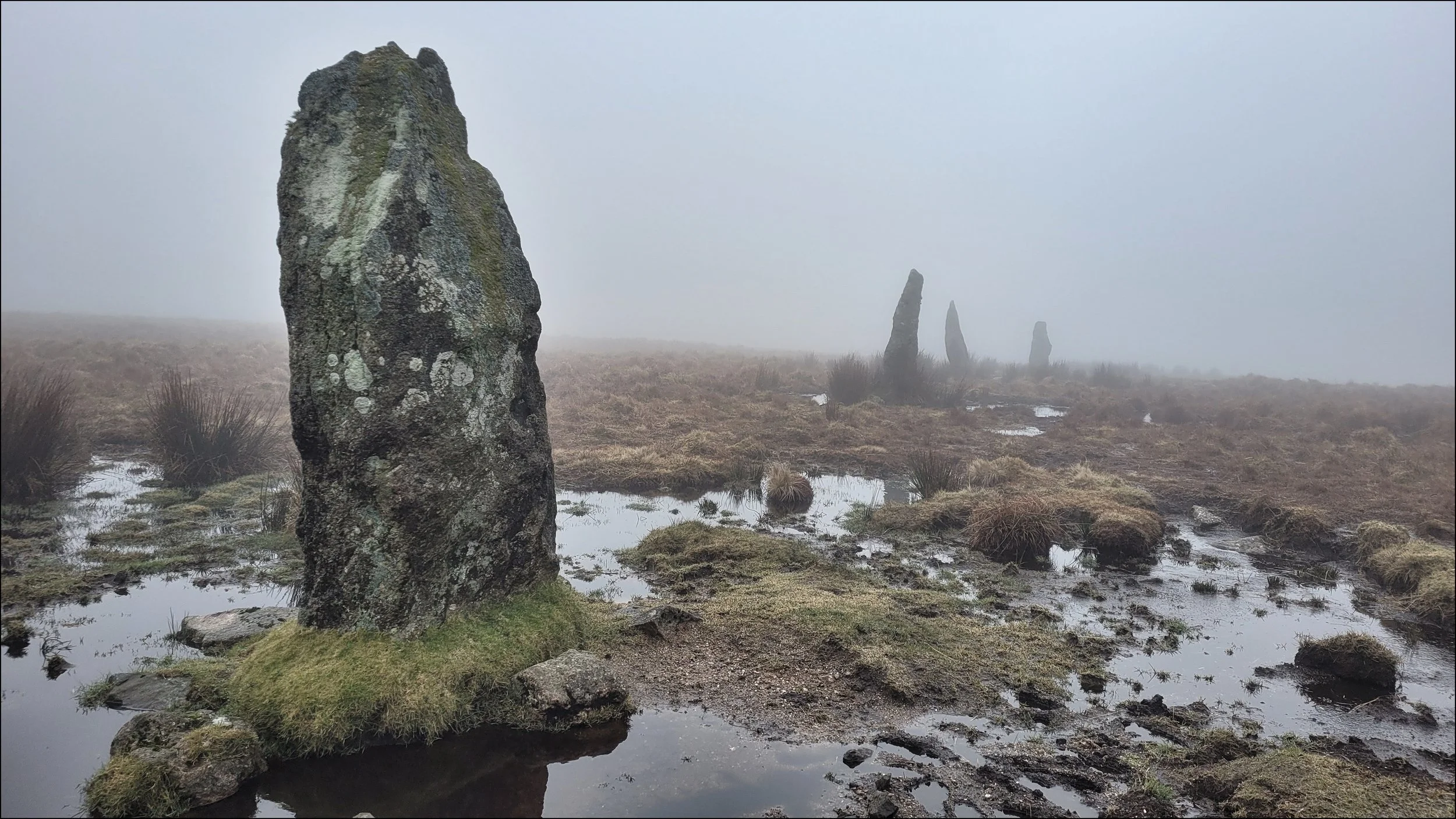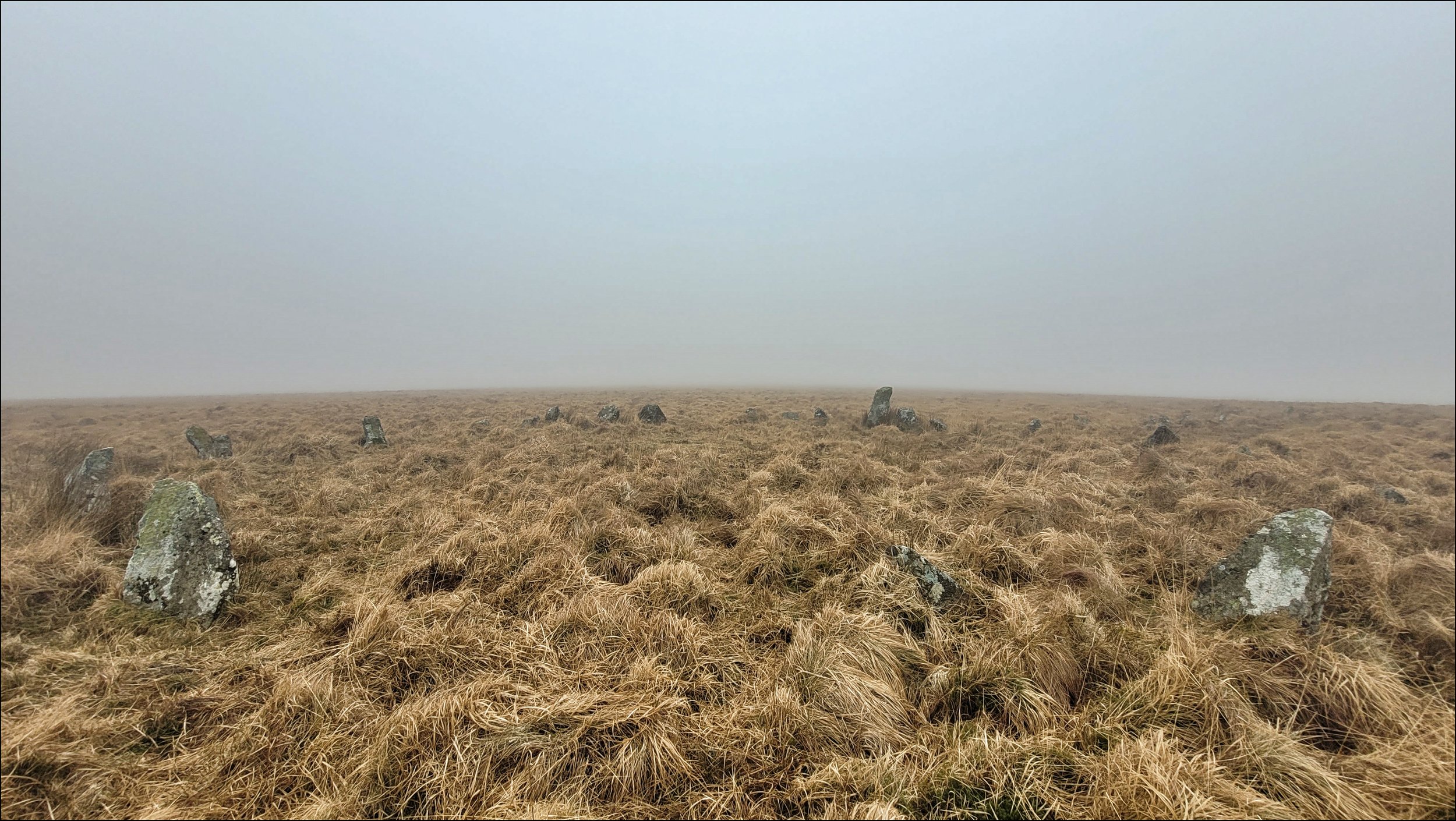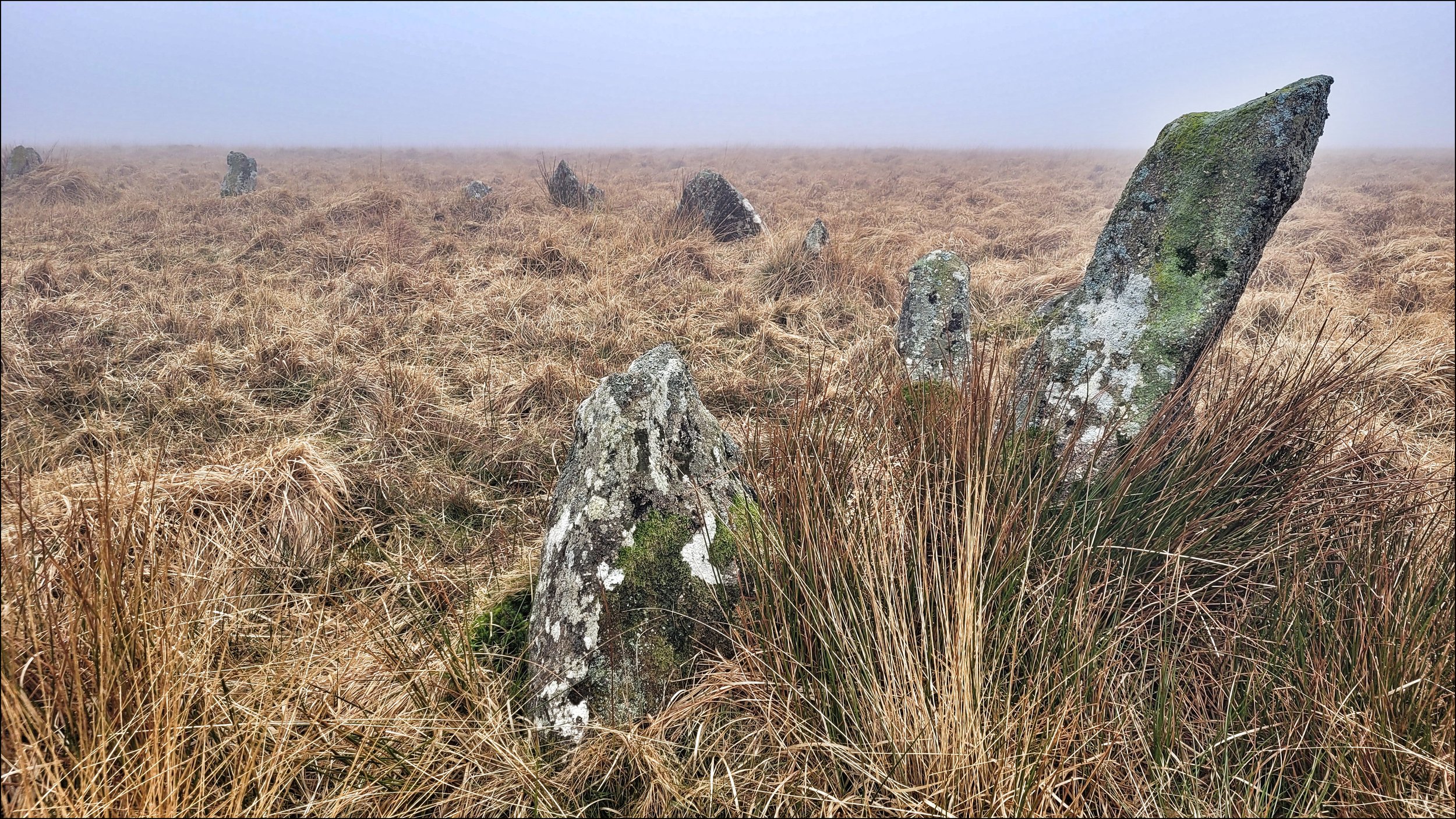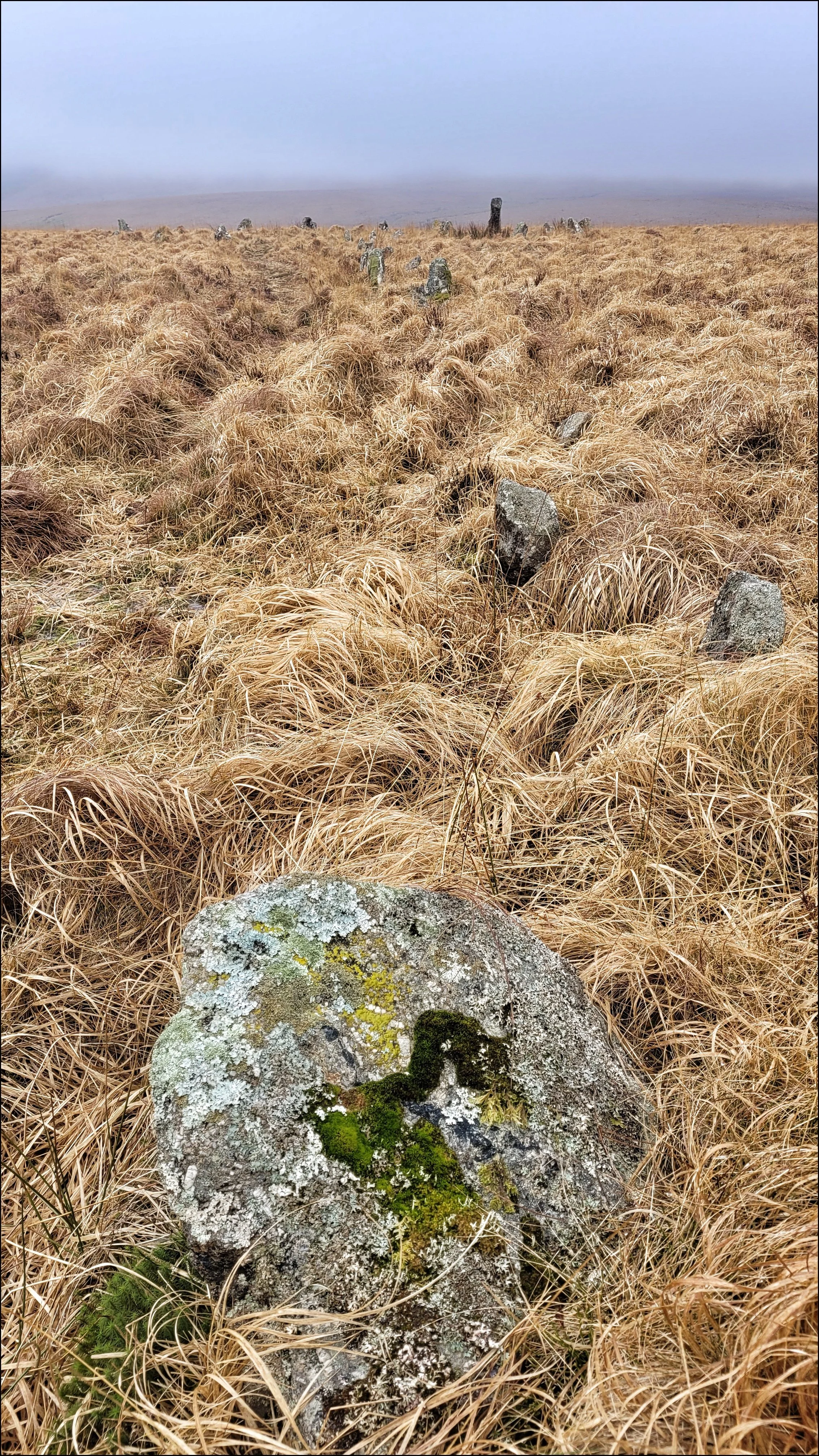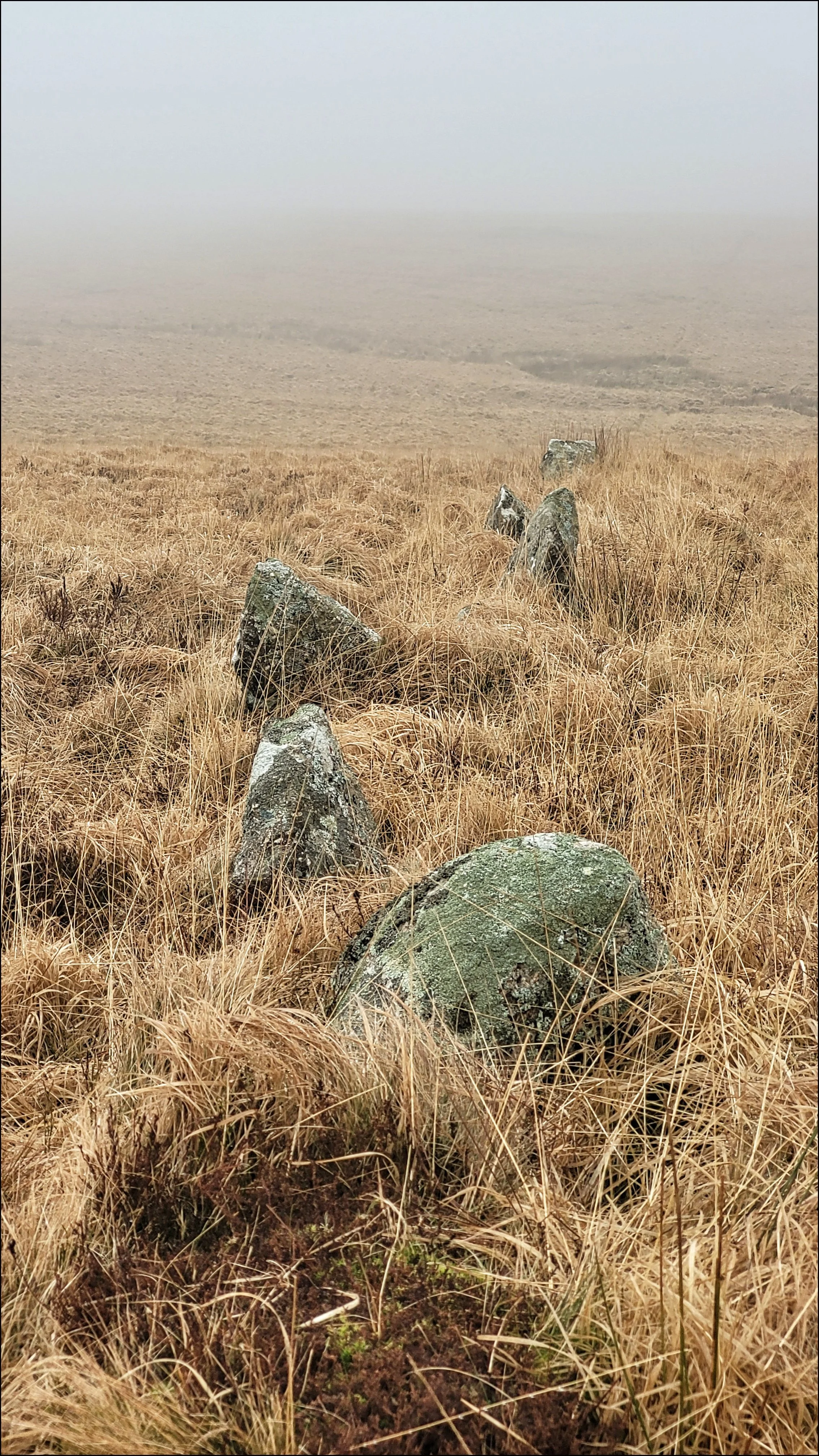Maidens in the Mist
19.02.2025
The village of Cornwood was a good place to start from to get up onto Stall Moor and venture into one of the most remote areas on Dartmoor. The walk would take at least five hours with three Megalithic sites along the route.
From the village centre I took a narrow lane fringed with quaint cottages to an old stone bridge over the River Yealm and then up through woodland, a farm track brought me to a gate where a service road lead me to and around a water depot. The ground began to get muddy up to a stone wall where I squeezed through another gate at the foot of Stalldon Barrow Hill. As I climbed the mist descended and my only reliable guidance was from Ordnance Survey which showed the Stone Row of Stalldon off to the left. A dark shape appeared through the mist which turned out to be a large terminal stone that marked the bottom of the row. It was five feet in height and beyond it I could only see four stones as the row disappeared up the hill into the mist. As I followed their line they got bigger, until at the top of the hill their height reached over seven feet. There were four of these giants, known as the ‘Cornwood Maidens’. They looked mysterious in the mist and appeared at odds with each other, leaning at opposing angles and each standing in a waterlogged ditch. This was largest and most dynamic row I had seen yet and I hoped the mist would lift for an instant to view it in it’s full glory.
I carried on down the northern slope with OS as my guide. Ahead about an hour away was the Upper Erme Row, the longest stone row in Britain at a length of over three Kilometers . As long as I kept the River Erme to my right I would stay on course. I dropped down to the bottom of the valley and crossed Bledge Brook, a tributary of the Erme. The mist had cleared a little and I could see the crest I was aiming for for the first time. The ground became harder and as I moved away from the river the going got easier. Then suddenly I was upon the stone circle of Kiss-in-the-Ring, a fifty foot wide low lying circle with all twenty six stones present but unevenly placed. I had come to Dartmoor at this time of year because of the die back of the ground cover enabling a better view of sites with low lying stones. On the far side of the circle was the starting stone for the Upper Erme Stone Row. I started walking along the closely laid stones that poked up through the dormant straw grass. They were no more than a foot high and disappeared off as far as I could see. I was two and a half hours into my walk and I would soon have to start heading back if I was to arrive before dark. I pressed on for half a mile before the row began to rise up to Green Hill to the north. Supposedly there are over a thousand stones in the row and taking into account all the gaps, there would have been twice as many at one time. It was a potent structure to be close to and I couldn’t help to imagine the human traffic along it over the last five thousand years. I turned around as the mist came down once more. This was not the day to walk it, but on a better day I will walk it’s length.
I retraced my steps back to Stalldon Row, passing a well preserve Cairn with an open cist at it’s centre. The mist had cleared and for ten minutes I had views of the South Hams and Plymouth Sound. Then as quickly as it cleared I and the Cornwood Maidens were once again enveloped in mist.

